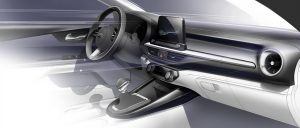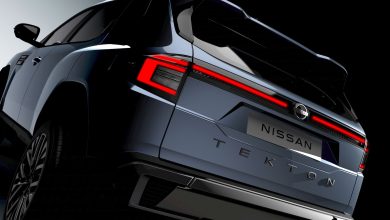KIA Cerato 2021 model is a Stinger Idol

KIA recently revealed some sketches announcing the new generation of the Cerato or Forte as it is called in some countries. The design sketches show the exterior and interior design of the compact sedan looking very much like a scaled down Stinger.

The bonnet is longer and the overall look is more dynamic. The face of the new Forte displays the typical Tiger Nose grid decorated with many chrome inserts. The bumper includes large air intakes and anti-fog headlamps incorporated in the center. Both the headlights and the headlights will be new and LED-based.

At the same time, a revolution is announced for the passenger compartment compared to what is presently there. The horizontal design of the dashboard is designed to give it a wider look than its compact size.
The number of buttons has been reduced, the main functions being now concentrated in the menu of the new, centrally positioned TFT screen. The circular ventilation outlets are also inspired by Stinger.




